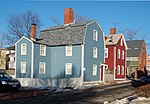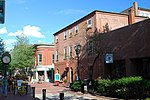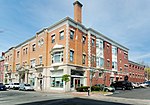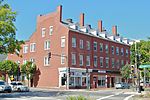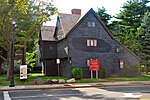Salem, Massachusetts

Salem ( SAY-ləm) is a historic coastal city in Essex County, Massachusetts, United States, located on the North Shore of Greater Boston. Continuous settlement by Europeans began in 1626 with English colonists. Salem was one of the most significant seaports trading commodities in early American history. Today Salem is a residential and tourist area that is home to the House of Seven Gables, Salem State University, Pioneer Village, the Salem Maritime National Historic Site, Salem Willows Park, and the Peabody Essex Museum. It features historic residential neighborhoods in the Federal Street District and the Charter Street Historic District. The city's population was 44,480 at the 2020 census.Salem is widely noted for the infamous Salem witch trials of 1692. Some of Salem's police cars are adorned with witch logos, a public elementary school is known as Witchcraft Heights, and the Salem High School athletic teams are named the Witches. Gallows Hill Park was originally believed to be the site of the executions during the Witch Trials, but in 2016 a site nearby called Proctor's Ledge was identified as the true site of the executions. Gallows Hill Park now serves as a town park, with baseball fields, tennis courts, and other amenities.
Excerpt from the Wikipedia article Salem, Massachusetts (License: CC BY-SA 3.0, Authors, Images).Salem, Massachusetts
Norman Street, Salem
Geographical coordinates (GPS) Address Nearby Places Show on map
Geographical coordinates (GPS)
| Latitude | Longitude |
|---|---|
| N 42.519444444444 ° | E -70.897222222222 ° |
Address
Norman Street 25;35
01970 Salem
Massachusetts, United States
Open on Google Maps

